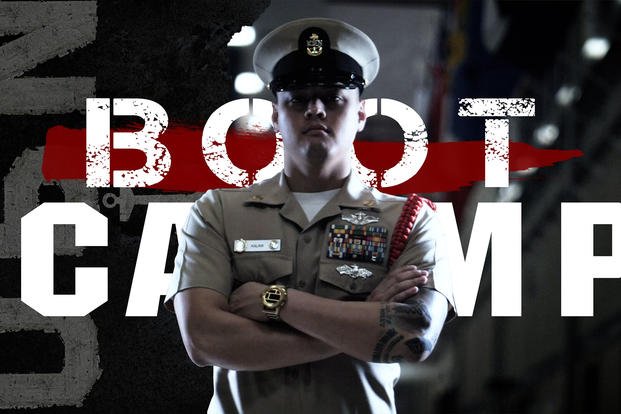There are several resources that will help you with running speed, endurance, push-ups, sit-ups and pull-ups, but here is a comprehensive answer to an age-old question. What do I need to do to prepare for boot camp? This column is a one-stop shop for information on training for many of the physical events that occur during boot camp.
Here is the question:
"I am currently planning on enlisting with the Army National Guard here in a matter of weeks. I will not attend basic until next year because I am still in school (age 17, junior.) Do you have any tips that I can use to increase my run endurance, time, etc., along with upper-body strength to better my PFT score?"
To answer this broad question properly, the answers need to break down your question into several different workouts as well as circuit training tips to combine the entire physical fitness test (PFT).
Mastering the PFT is really the first step to getting prepared for boot camp. For the Army, Navy, Air Force and Coast Guard, the physical fitness test will consists of:
Push-ups: Proper push-ups are the key to more push-ups. Placement of the hands should be just greater than shoulder width directly under your shoulder when in the up push-up position. This will better distribute the muscular involvement between the arms (triceps), chest and shoulders.
Wider hand placement works more chest while close placement works the triceps and shoulders more. Touch your chest to your counter's fist, which is usually about two inches off the floor. To score higher on this test, try to do your push-ups nonstop without rest and always practice them fast to get used to multiple reps of push-up workouts. See the push-up articles for more workout ideas:
Sit-ups: Sit-ups or curl-ups will be tested with someone holding your feet while your knees are bent. Sit up by flexing your stomach muscles, with your hands crossed over your chest, and touch your elbows to your knees. Drop your torso to the floor by relaxing your abs and let gravity take you down. Let yourself down slowly.
This is an exercise you need to pace. Most people burn out in the first 30 seconds with 30 curl-ups accomplished and are only able to perform another 20 or so curl-ups within the next 1:30. By setting a pace at, for instance, 20 sit-ups every 30 seconds, you can turn your score of 50-60 to 80 with very little effort. The best way to get better at sit-ups is to practice sit-ups with timed sets of the above and a goal pace for one- or two-minute test periods.
1.5 or two-mile timed run (Army): Running is another pacing exercise that requires practice up to five or six days a week in order to become an above-average runner. To pass the PFT runs on an average score, you still need to train at least three days a week. Some ways to train can be found in Improving Your PFT Run Time
Proper tips for running should include deep inhales and exhales (no shallow breathing), heel-toe rolling strike and a straight arm swing.
If you are entering the Army or Marine Corps, practicing running in boots is also a good idea about two months from boot camp. Only practice about 1-2 times a week in boots prior to boot camp. Wear two pairs of socks to prevent blisters: One thin polyester pair against the skin and one thick, cotton sock on the outside.
The Marine Corps adds pull-ups to the PFT list but does not test in push-ups and adds an extra mile to the Army's two-mile run. So for the Marine Corps, you need to be able to master the following:
Pull-ups: This is the ultimate exercise to test upper-body strength. It requires grip strength from your hand and forearms and pulling power from your biceps and back muscles. The proper pull-up requires your palms to face away from you and your hands just greater than shoulder width. Pull you chin over the bar and simply drop back to the starting position, with your arms straight and biceps relaxed.
3-mile timed run: This run is twice as long as most boot-camp tests and requires more endurance training. The article below will help you train for the longer timed run. If properly prepared, you can complete this run on the same pace of the 1.5-mile timed runners of the Navy, Air Force and Coast Guard. It is not uncommon for Marines to run the three-mile run in 18:00.
Depending on your service's boot camp, the training programs have an obstacle course, rope climb, swimming, ruck marches and use the push-up as a punishment exercise. So prepare yourself properly for your service's standards at least 4-6 months before departing for the military.
Related video
Other related boot-camp articles:
- Are You Fit to Serve?
- Prepare Yourself for Boot Camp
- No Weights at Boot Camp
- Pre-Boot Camp Training
- Physical Fitness Test Anxiety
Stew Smith is a former Navy SEAL and fitness author certified as a Strength and Conditioning Specialist (CSCS) with the National Strength and Conditioning Association. Visit his Fitness eBook store if you’re looking to start a workout program to create a healthy lifestyle. Send your fitness questions to stew@stewsmith.com.
Want to Learn More About Military Life?
Whether you're thinking of joining the military, looking for fitness and basic training tips, or keeping up with military life and benefits, Military.com has you covered. Subscribe to Military.com to have military news, updates and resources delivered directly to your inbox.


















